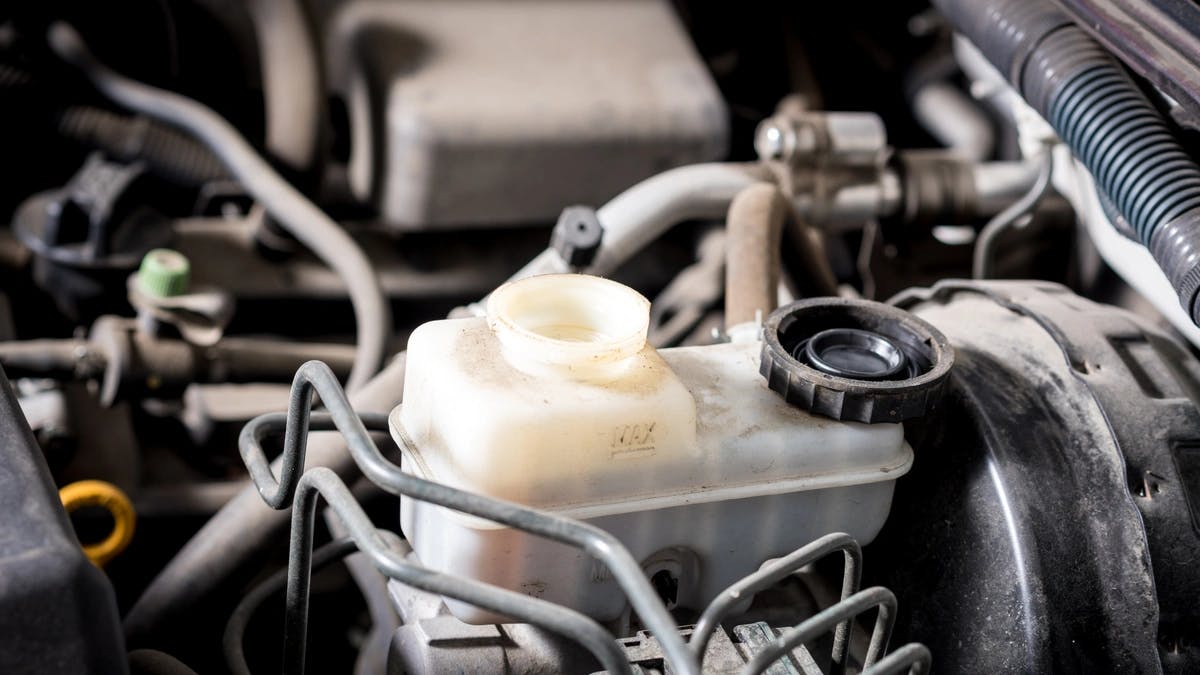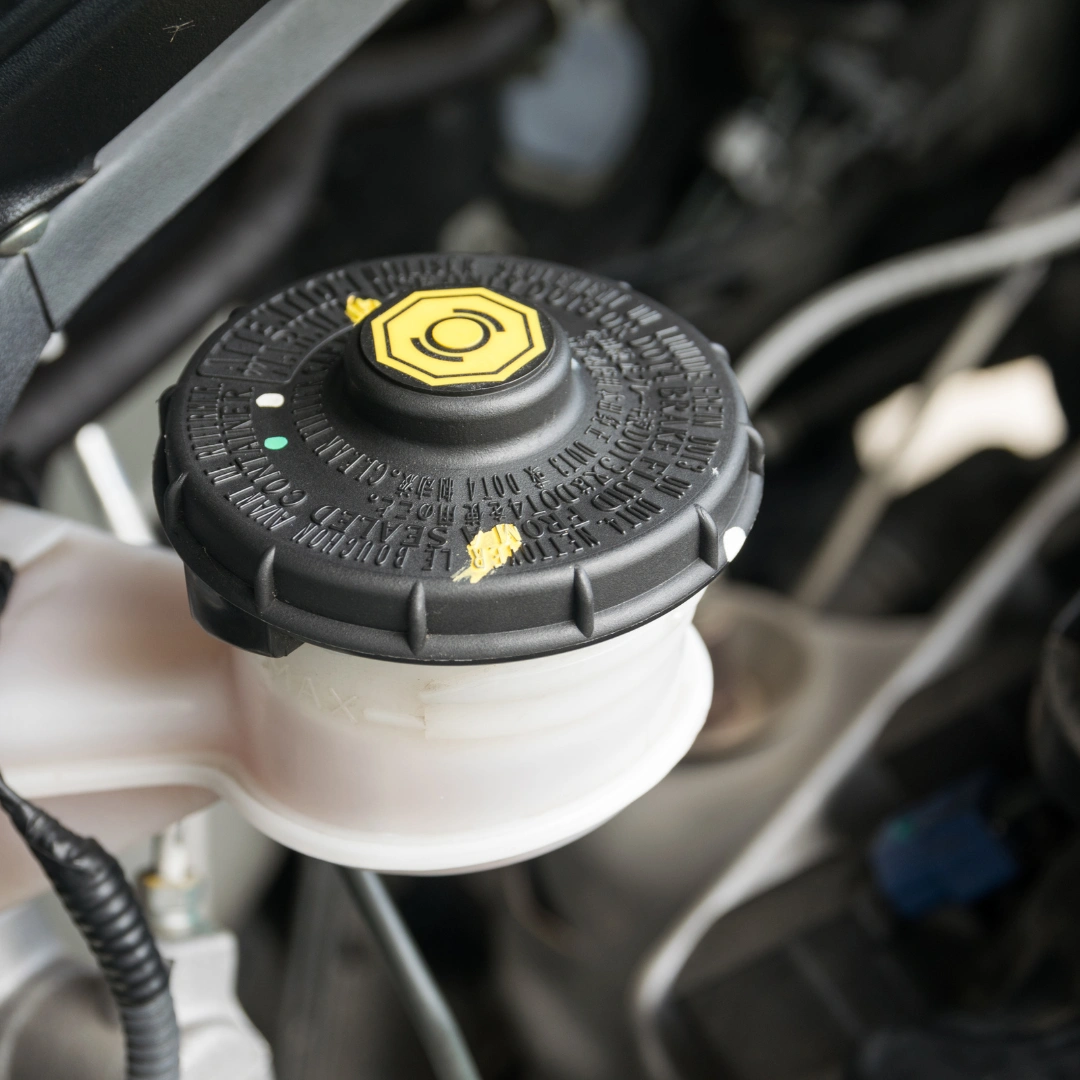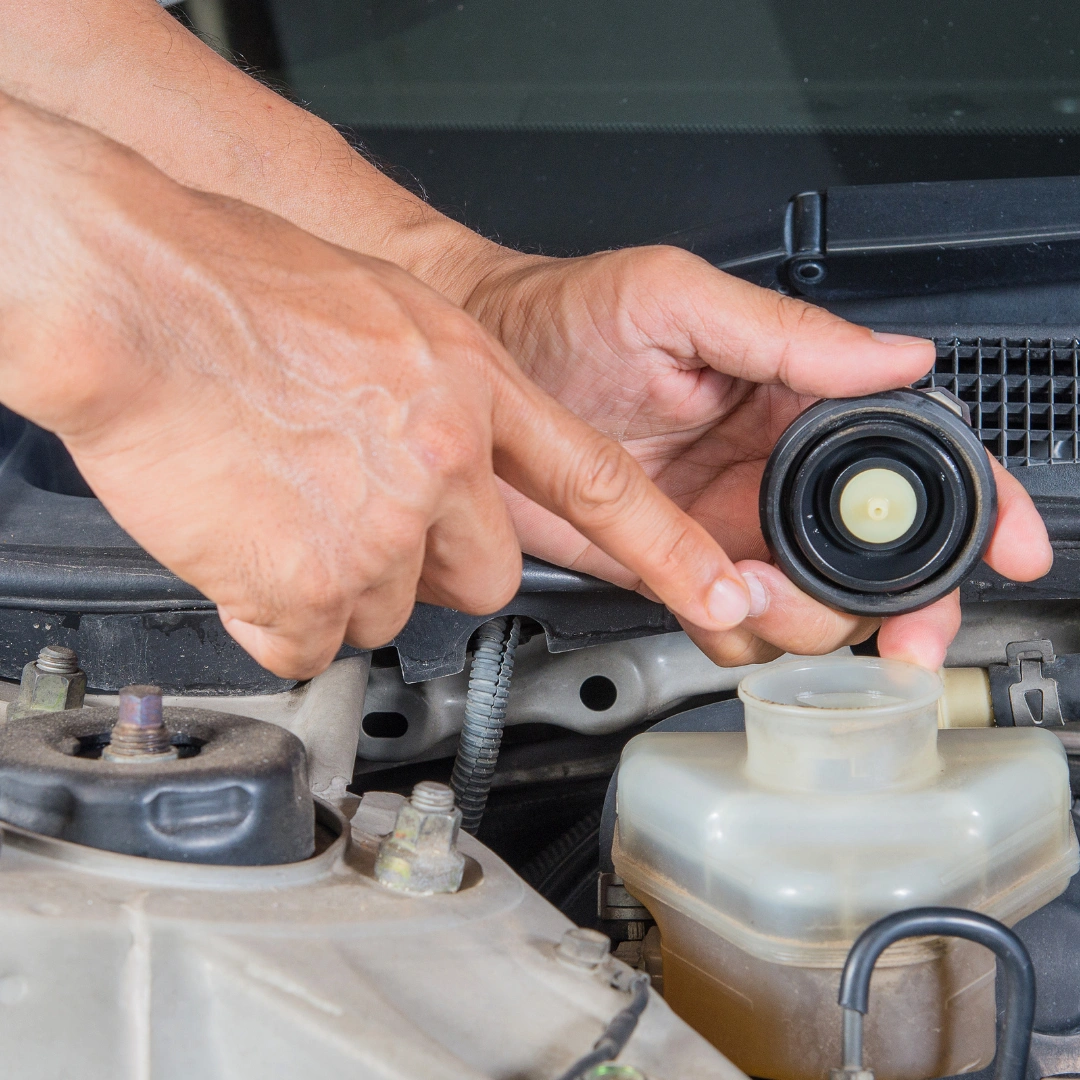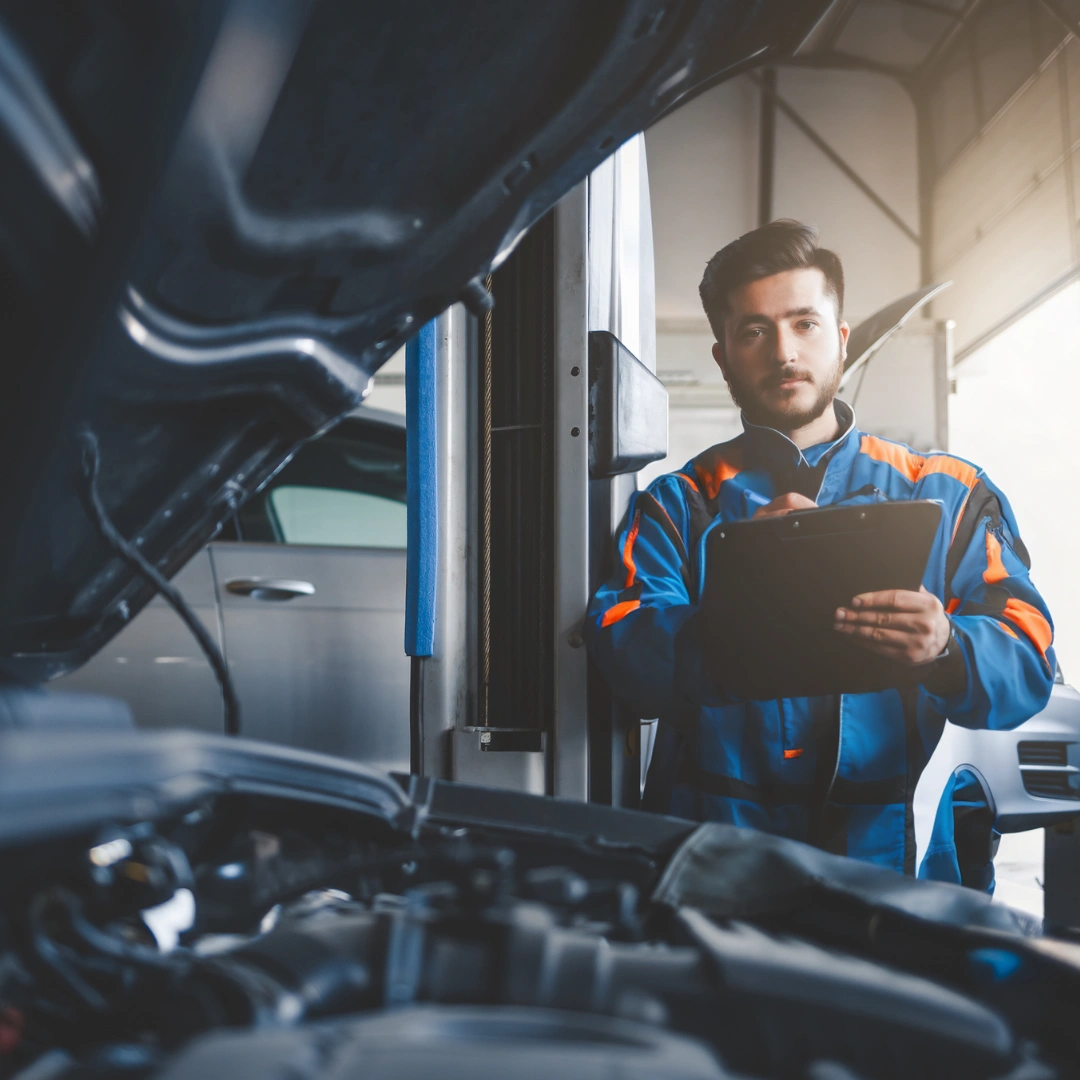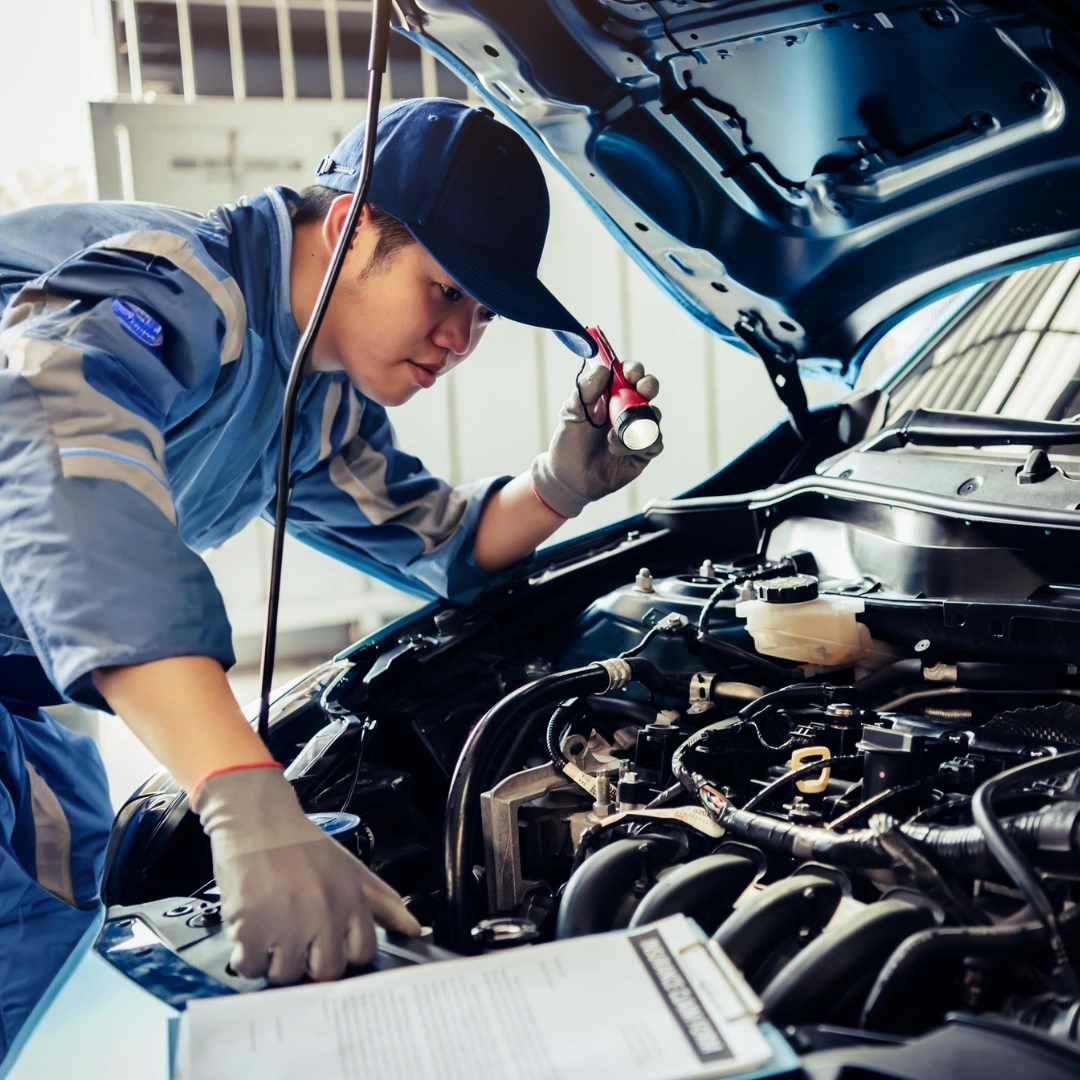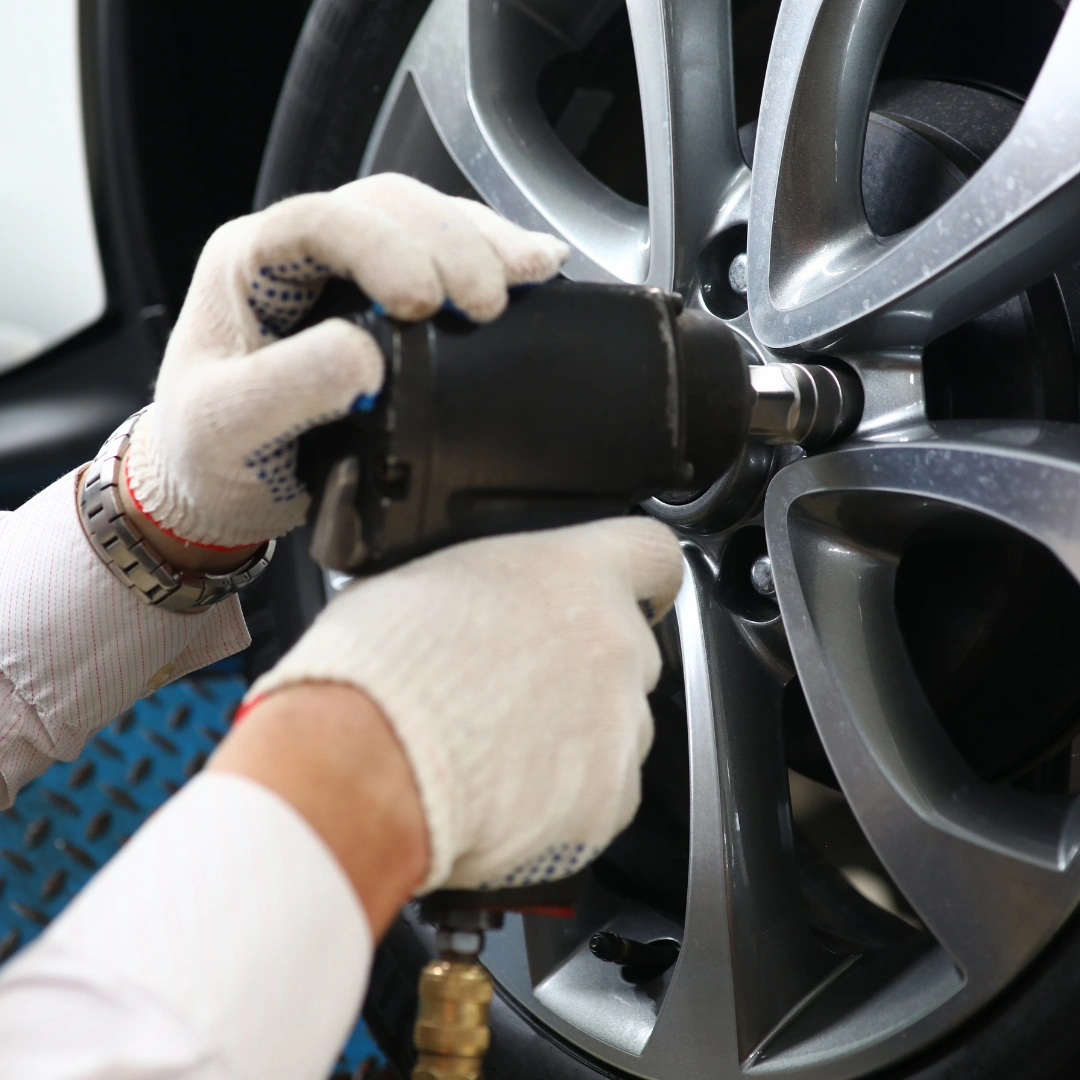Why should I replace my brake fluid?
If your brake fluid contains water or another pollutant, you should replace it to stay safe on the road. While most mechanics recommend changing the brake fluid every two years or every 40,000 - 45,000 miles, most people wait to change it until it's too late.
Not changing your brake fluid could result in reduced brake effectiveness, pedals that you can press to the floor, or the need to pump your brakes to stop.
As your brake fluid builds moisture in the system, it changes how the brake system reacts to heat, which can alter your braking ability.
Key Takeaways:
|
How much is Brake Fluid Change?
The costs of changing the brake fluid, or doing a brake fluid flush, should cost between $80 to $130 and should be done by a professional mechanic to ensure safety.
These costs can vary based on whether you want to change the fluid yourself and the type of fluid you have.
Generally, brake fluid ranges in price from $6 to $39 per quart, mechanics charge $150-$210 per hour, and changing the brake fluid in most vehicles will cost you an average of $100.
Understanding the Importance of Brake Fluid Replacement
If your brake fluid contains water or another pollutant, you should replace it to stay safe on the road. While most mechanics recommend changing the brake fluid every two years or every 40,000 - 45,000 miles, most people don't change it until it's too late.
Not changing your brake fluid could result in reduced brake effectiveness, pedals that you can press to the floor, or the need to pump your brakes to stop. As your brake fluid builds moisture in the system, it changes how the brake system reacts to heat, which can alter your braking ability.
What Is the Purpose of Brake Fluid?
The braking system in your car is a closed network, so nothing should be allowed to leave or enter the system. It is important because the braking system is hydraulic, so when you press down on the parking brake, you reallocate the brake fluid, pushing it and strengthening the initial load exerted on the foot pedal.
The brake fluid must remain clean and unpolluted to have the system work effectively. Brake fluid is hygroscopic, meaning it draws water molecules from the environment, which will occur slowly (unless you have a backflow) and ultimately lead to a higher proportion of water over time.
Since a lot of heat gets generated, the boiling point drops when water gets mixed with brake fluid, making the fluid less efficient and resulting in a spongy brake pedal. This is why brake fluid is essential and must get replaced often. A brake fluid change will also protect the brake lines and other braking system components.
When Should You Replace Your Brake Fluid?
A brake fluid flush is recommended every two years, but this can vary based on the car and driver. It is important to periodically change brake fluid based on the manufacturer’s suggested intervals.
Nevertheless, the lifespan of your vehicle's brake fluid depends primarily on how you drive the car. Cars that drive for a lot of miles will demand more frequent fluid changes.
If the brake fluid gets contaminated with water or other harmful substances, you must change it before the vehicle is back on the road.
You should also change your brake fluid when performing significant repairs, such as replacing your master cylinder.
Changing the brake fluid is tricky as each time you pull the master cylinder cap, a small amount of water included in the air will get soaked, decreasing the overall lifespan of the brake fluid.
How to Examine Your Brake Fluid
Step 1: Locate the Brake Fluid Reservoir
The brake fluid reservoir is typically located in the hood of your vehicle. Look for a small plastic container with a cap labeled "Brake Fluid".
Step 2: Check the Brake Fluid Level
The reservoir will have two marks: LOW (L) and FULL (F). The brake fluid level should remain between these two lines. Try placing a light behind the reservoir if you have trouble seeing the mark.
Step 3: Interpret the Brake Fluid Level
If the level is slightly low but still in the center of the lines, it’s normal. As your brake shoes and pads wear out, the caliper pistons will push out more, which will drive the brake fluid level down.
You will also need to replace your vehicle's brake pads at some point, and retracting the piston will get the brake fluid level back to FULL.
Step 4: Investigate a Brake Fluid Leak
If the level is below the LOW spot, you should investigate for a brake fluid leak. A hydraulic brake device is a closed network that should never lose brake fluid.
Suppose the brake fluid level is considerably low or the master cylinder keeps emptying. In that case, there is likely a leakage somewhere, and you should have a mechanic check out your car immediately.
By following these simple steps, you can easily check the brake fluid level in your vehicle and avoid potential brake system problems.
How to Change Your Brake Fluid
Step 1: Begin by raising the vehicle and putting it on jack stands.
While you can theoretically complete a brake fluid flush with wheels on, this method is often more comfortable and less cluttered with the wheels extracted from the car. In addition, to drain the brake fluid, you’ll need to open the four pins placed behind the brakes.
Step 2: Remove some brake fluid from the master cylinder.
Open your hood and use a turkey baster to remove some brake fluid from the master cylinder. This is important as you do not want your master cylinder to overflow as you push the pistons out.
Step 3: Remove the wheels from the car and release the bleed nut.
Disc brakes will include a bleed nut on the caliper. On the other hand, Drum brake bleed screws will remain positioned behind the spin cylinder.
Add a short length of transparent rubber hose and attach to your container and fasten the other end of the hose to the bleed screw on the brake most distant from the head cylinder. This is generally the rear, passenger-side (RR) wheel in cars.
Now take a wrench to open the bleeder. Be exceptionally cautious as bleeders tend to hold, and they are easy to get damaged. A small quantity of brake fluid will begin coming out.
Step 4: Have someone pump the brakes
As the person slowly pumps the brake pedal, pull the screw once the brake pedal reaches the floor. As you bleed out the brakes, make sure to add new brake fluid to the master cylinder so that the master cylinder is never empty. Repeat the procedure until the brake fluid coming out of the hose becomes transparent.
Perform the same steps for every wheel, always starting from the one furthest away from the head cylinder.
If you want to be extra careful, some people push alcohol through the braking system first before adding the new brake fluid and then add the fresh brake fluid after to flush the brake fluid fully.
Here are NuBrakes, we offer mobile auto technicians that will come to your home or office for brakes, oil, maintenance, and more so that you have the most convenient repair service while saving you time and money.
Contact us for a free car repair quote.
